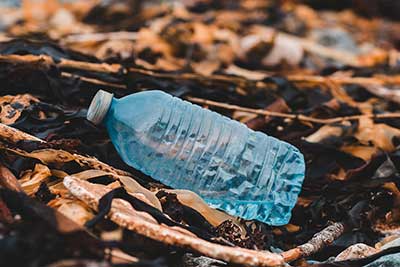Relevance: GS-3: Biodiversity, Environment, Security and Disaster Management.
Key Phrases: Central Pollution Control Board, United Nations Environmental Programme, World Bank, Environment Performance Index-2022.
Context:
- Ban on disposable plastic is scheduled to kick in on 1 July 2022, with India’s Central Pollution Control Board set to prohibit the manufacture, import, stocking, distribution and sale of single-use items that use a class of inputs infamous for not being biodegradable.
Background:
- Four or five decades ago, plastic was touted as an eco-friendly option.
- Paper bags and wooden chairs meant the guilt of pulped flora and axed trees, while polythene carry-bags and polypropylene furniture were presented as markers of modern life, with their inputs derived from oil.
- What that synthetic push failed to foresee was its large-scale invasion of our lives.
- Little attention was paid to waste disposal, with the result that we now have entire ecosystems at threat of being choked by materials that refuse to blend back into nature.

Do you know?
- The United Nations Environmental Programme (UNEP) places annual plastic output at around 400 million tonnes per year of all that has ever been made, just about 12% was burnt and only 9% recycled.
- By another estimate, over 300 million tonnes is cast away as garbage every year, with India among the top three generators of plastic waste, along with China and the US.
- India has finished at the bottom of the Environment Performance Index-2022 released by the World Bank.
What are Plastics?
- Plastics are simply chains of like molecules linked together.
- These chains are called polymers.
- This is why many plastics begin with “poly,” such as polyethylene, polystyrene, and polypropylene.
- Polymers often are made of carbon and hydrogen and sometimes oxygen, nitrogen, sulfur, chlorine, fluorine, phosphorous, or silicon.
The Items being banned:
- The items on which the Central Pollution Control Board (CPCB) has announced a ban are earbuds; balloon sticks; candy and ice-cream sticks; cutlery items including plates, cups, glasses, forks, spoons, knives, trays; sweet boxes; invitation cards; cigarette packs; PVC banners measuring under 100 microns; and polystyrene for decoration.
- The Ministry had already banned polythene bags under 75 microns in September 2021, expanding the limit from the earlier 50 microns.
- From December 2022, the ban will be extended to polythene bags under 120 microns.
- According to the Plastic Waste Management Rules, 2016, there is also a complete ban on sachets using plastic material for storing, packing or selling gutkha, tobacco and pan masala.

Why it is difficult to phase-out plastics completely?
- Food Preservation:
- One of the biggest uses of plastic packaging is food.
- Plastic packaging supports the safe distribution of food over long distances and minimizes food waste by keeping food fresher for longer, and it provides a barrier against bacteria.
- For example, 1.5g of plastic film wrapping a cucumber can extend its shelf life from three to 14 days, and selling grapes in plastic bags or trays has reduced in-store wastage of grapes by 20%.
- Lack of options available:
- The very success of plastic is based on its cheapness, thanks to economies of scale granted by industrial units that use hydrocarbon feedstock to produce sundry polymers.
- Given the magnitude of installed capacity we have, few other products are quite so inexpensive or convenient.
- This also explains the emphasis on recycling. Without a substitute, plastic cannot fully be phased out.
- Market Behavior:
- Stuff that is cheap and useful can be ‘addictive’ in terms of market behavior.
Way Forward:
- Invest in Local Collection: There is an urgent need to invest in local collection and recycling infrastructure to divert plastic waste away from landfills, open burning, and the marine environment.
- Role of Government: Governments can play a crucial role in developing standards and policies to strengthen demand for recycled plastic, level the playing field for global and domestic companies and help drive a circular economy for plastics.
- Recycled Plastic: To create an enabling environment, it is particularly important to develop and implement recycled plastic content standards for major consumer products.
- Bioplastic Alternatives: Alternative plastics must be created which are just as lightweight, durable and convenient as conventional plastics. Plant-based plastics, or bioplastics, made from corn starch or sugarcane, are one such solution.
- Investment in research: Investment in research and development for alternatives should be a priority.
India Plastic Challenge – Hackathon 2021
- To support innovation and entrepreneurship to tackle plastic waste pollution and elimination of single-use plastic, “India Plastic Challenge – Hackathon 2021” calls upon start-ups, entrepreneurs, and students of Higher Education Institutions (HEIs) to develop innovative solutions to mitigate plastic pollution and develop alternatives to single-use plastics.
Conclusion:
- We all should remember that Rome was not built in a day, in a country with a sizeable informal sector and patchy record on compliance, a squeeze at only one end may not suffice.
- The abundance of plastic being used and strewn all around us suggests that it will take a little longer time to phase out single used plastics completely.
Source: Live-Mint
Mains Question:
Q. Why it is difficult to phase-out single used plastics completely? Discuss the impact of plastic on Environment. (250 words).







